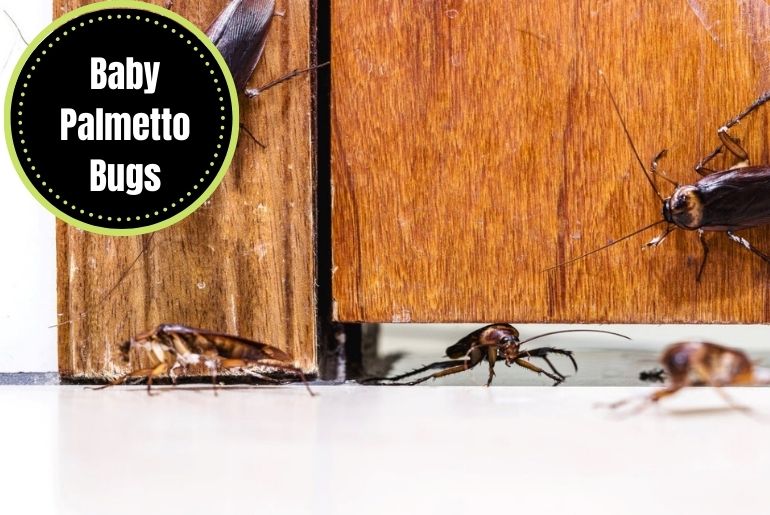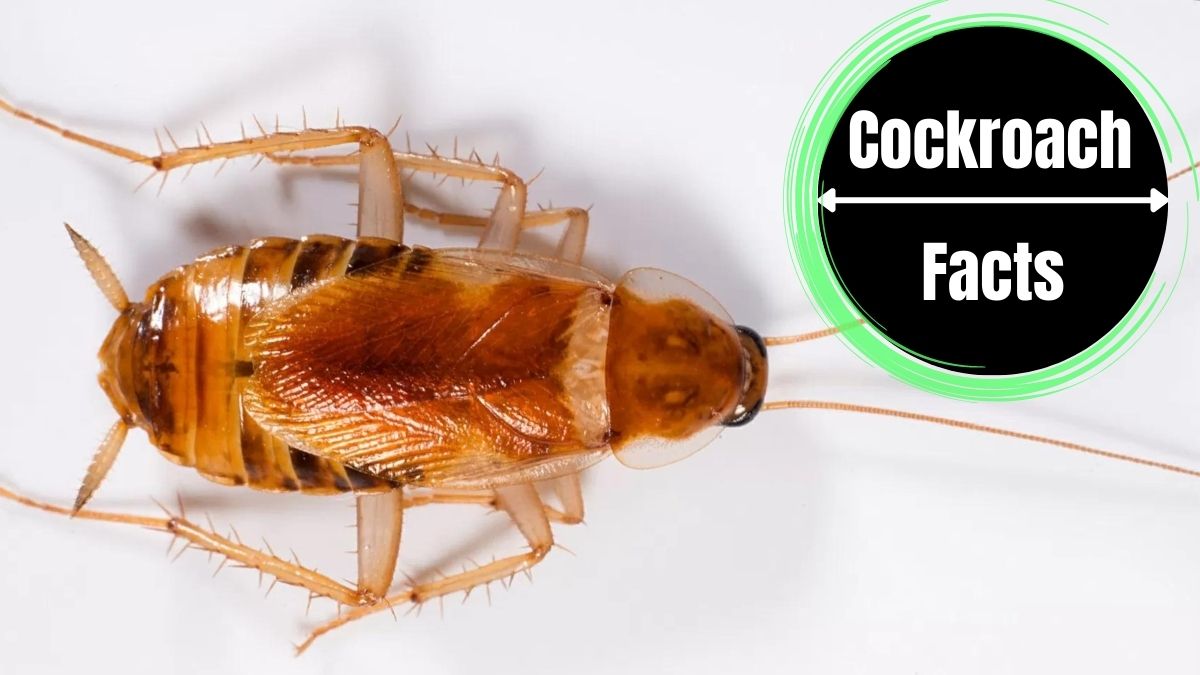Palmetto bugs, also known as American cockroaches, are unwelcome guests that can infest our homes. Among the different life stages of these pests, baby palmetto bugs can be particularly challenging to deal with. In this article, we will delve into the world of baby palmetto bugs, discussing their appearance, habits, signs of infestation, prevention measures, and effective control methods.
Identifying Baby Palmetto Bugs:
Baby palmetto bugs share many characteristics with their adult counterparts, but there are a few key differences. They are smaller in size, measuring about 1/4 to 1/2 inch in length. Their color ranges from light brown to dark brown, and they have a distinct shield-like pattern on their backs. Despite their small size, they possess the ability to grow rapidly, making early detection crucial.
Behavior and Habits of Baby Palmetto Bugs:
Baby palmetto bugs exhibit similar behaviors to adult cockroaches, albeit on a smaller scale. They tend to nest in warm, dark, and secluded areas such as cracks, crevices, and wall voids. These pests are omnivorous and will consume almost anything, including food scraps, decaying matter, and even paper products. Being primarily nocturnal, they prefer to remain hidden during the day and become active at night.
Signs of Baby Palmetto Bug Infestation:

Detecting a baby palmetto bug infestation can be challenging, but there are a few telltale signs to watch out for. Look for droppings and excrement resembling small dark pellets or coffee grounds. Another indicator is the presence of egg casings, which are small, brownish capsules that house multiple eggs. Unpleasant odors, especially a musty or oily smell, can indicate a growing infestation. Additionally, you may notice damage to books, papers, and other cellulose-based materials as these pests feed on them.
Prevention Measures for Baby Palmetto Bugs:
Prevention is key when it comes to baby palmetto bugs. By implementing the following measures, you can minimize the chances of an infestation:
- Maintain cleanliness and hygiene by regularly cleaning your home, especially in kitchens and areas where food is stored.
- Seal entry points, such as cracks in walls, gaps around pipes, and openings around doors and windows.
- Reduce moisture and humidity levels by fixing leaky pipes, using dehumidifiers, and ensuring proper ventilation.
- Store food in airtight containers and promptly clean up spills and crumbs.
Natural Methods of Baby Palmetto Bug Control:
If you prefer natural methods of pest control, consider the following options:
- Diatomaceous Earth: Sprinkle this powdery substance in areas where baby palmetto bugs are likely to travel. The tiny particles will damage their exoskeletons, leading to dehydration and death.
- Essential Oils: Peppermint, eucalyptus, and tea tree oils have repellent properties and can be mixed with water and sprayed in infested areas.
- Boric Acid: Create a mixture of boric acid and sugar, placing it in strategic areas. The sugar will attract the bugs, while the boric acid acts as a lethal toxin when ingested.
- Sticky Traps: Place sticky traps in areas where baby palmetto bugs are commonly seen. The pests will become trapped on the adhesive surface.
Chemical Treatments for Baby Palmetto Bug Control:
For more severe infestations, chemical treatments may be necessary. Consider the following options:
Insecticide Sprays: Choose a pesticide specifically formulated for cockroach control and follow the manufacturer’s instructions carefully. Spray-infested areas, cracks, and crevices where baby palmetto bugs are likely to hide.
- Dusts and Powders: Apply insecticidal dust or powders containing ingredients like boric acid or silica gel into wall voids, attics, and other hard-to-reach areas. These substances cling to the pests’ bodies and are carried back to their hiding spots, effectively eliminating them.
- Baits and Gel Formulations: Use cockroach baits or gel formulations that contain attractants and insecticides. Place them in areas frequented by baby palmetto bugs, such as under sinks and behind appliances. The pests will consume the bait and spread it among their colony, resulting in widespread elimination.
Hiring Professional Pest Control Services:
If the infestation persists or becomes unmanageable, it may be necessary to seek professional pest control services. Consider the following steps when hiring a professional:
- Choose a reputable pest control company with experience in dealing with cockroach infestations.
- Schedule an assessment and inspection of your home to determine the extent of the infestation and identify potential entry points.
- Discuss treatment options with the pest control experts and choose the most suitable method for your situation.
- Follow up with any recommended maintenance or monitoring plans to ensure long-term pest control.
Safety Precautions for Baby Palmetto Bug Control:
When dealing with baby palmetto bugs and implementing pest control measures, it is essential to prioritize safety. Follow these precautions:
- Read and carefully follow all product labels and instructions for proper usage and application.
- Protect children and pets by keeping them away from treated areas until it is safe.
- Ensure proper ventilation and air circulation during and after treatment to minimize exposure to chemicals.
- Use appropriate protective gear, such as gloves and masks, when handling pesticides or insecticides.
Monitoring and Regular Inspections:
To stay ahead of potential infestations, implement a routine monitoring and inspection system:
- Conduct regular checks in areas prone to baby palmetto bug activity, such as kitchens, bathrooms, and basements.
- Look for signs of droppings, egg casings, and any damage caused by the pests.
- If you spot any indications of an infestation, take immediate action to prevent it from spreading further.
Long-Term Prevention Strategies:
Maintaining a pest-free home requires ongoing efforts. Consider these long-term prevention strategies:
- Maintain cleanliness and hygiene by regularly cleaning your home, removing clutter, and promptly disposing of trash.
- Pay attention to exterior maintenance, sealing gaps and cracks in the foundation, repairing damaged screens, and keeping vegetation trimmed.
- Consider enrolling in professional maintenance programs offered by pest control companies, which include regular inspections and preventive treatments.
FAQS
What do baby palmetto roaches look like?
Baby palmetto roaches, also known as nymphs, resemble miniature versions of adult palmetto bugs. They have a similar elongated and flat body shape, with six legs and two antennae. Their coloration varies depending on the species, but they often have a paler hue compared to the adults.
How do you get rid of palmetto bug babies?
To eliminate palmetto bug babies, you should follow similar methods used for adult roaches. Begin by ensuring proper sanitation, eliminating food and water sources, and sealing cracks and gaps in your home. Use cockroach baits or traps strategically placed in areas where you’ve seen nymphs or suspect their presence. Regular vacuuming and cleaning can also help remove eggs and nymphs from your living spaces.
Do baby palmetto bugs fly?
Baby palmetto bugs, or nymphs, are generally incapable of flying. They lack fully developed wings, which means they rely on crawling to move around. It’s the adult palmetto bugs that have well-developed wings and can fly short distances if they feel threatened.
Do baby palmetto bugs bite?
Baby palmetto bugs, like adult ones, are not known for being aggressive biters. Their primary focus is finding food and shelter. While they are not typically prone to biting, it’s essential to exercise caution around them, as they are still roaches and can carry bacteria and allergens that might trigger skin irritation or allergies in some individuals.
Conclusion:
Baby palmetto bugs can quickly become a nuisance if not addressed promptly. By familiarizing yourself with their appearance, habits, and effective control methods outlined in this comprehensive guide, you can take proactive steps to prevent infestations and ensure a pest-free environment. Whether you choose natural or chemical treatments or opt for professional assistance, the key lies in consistent monitoring, regular inspections, and maintaining a clean and hygienic home. Remember, early detection and swift action are crucial for effective baby palmetto bug control.

